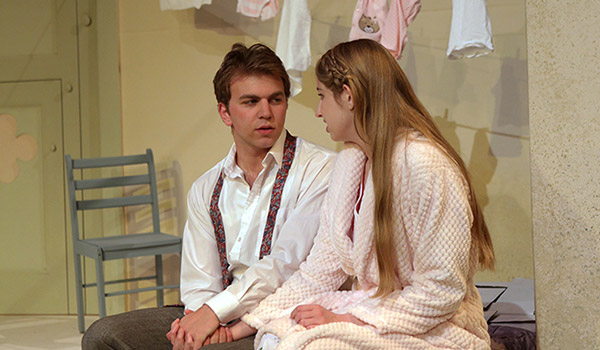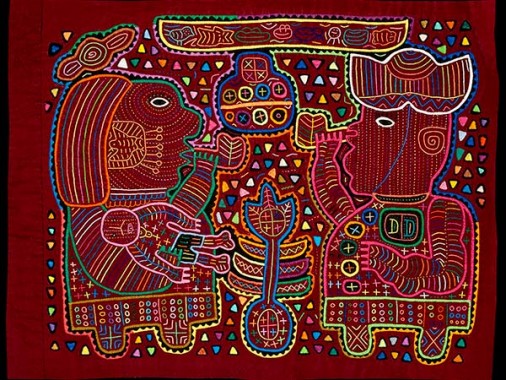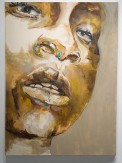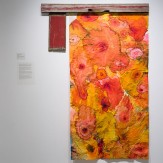A wondertale
Imaginations ran wild as students envisioned the magical qualities of forests (or wald in German) as the setting for a play inspired by the traditions, history, and grammar of Grimm’s fairytales. The students wrote and produced Wald, a wondertale (Photo above by Duy Trinh ’14) for English 357: Children’s Theater Workshop, which was taught and directed this past spring by theater professor April Sweeney.
“A lot of people think plays for children are not necessarily plays for adults,” said Sweeney, who charged her students with developing a play for all ages. She asked them to explore their own childhoods — what they remembered and what types of stories they enjoyed hearing. Then, they collaborated on their research, improvisations, explorations, and scenes, developed the characters, and, soon, a storyline unfolded.
Over three days in April, they performed Wald, a wondertale for full crowds, including local school groups. The piece wasn’t solely for entertainment value — educational lessons and audience participation were also key components.
The hour-long play featured the epic folk music of Kristina Jung (former Max Kade Fellow at Colgate), and the costumes of New York City-based designer Tyler Holland.
“The presence of children really is a magical thing,” reflected Kristen Friberger ’14. “As young twenty-somethings, we forget the sense of wonder and willingness to believe.”
Friberger reflected on the creative process on her Tumblr page “A Grimm Outlook,” which featured blog posts, images, and videos. She and her classmates were required to keep digital journals on Tumblr, with weekly entries throughout the semester. For this, Sweeney received a university grant to provide students with iPads for the duration of the course. By reading each other’s journals, classmates could consider each others’ points of view, which drove the direction of the piece.
“The play was generated from who they are [as students] and what they are interested in,” Sweeney said. “It gave them a sense of ownership over the work.” The collaborative effort resulting in Wald, a wondertale proved that a play for children can be a play for adults, too — a truly magical experience for all.
— Lauren Casella ’16
Imagining dreams and questioning life

Charlotte Arbogast ’16 and Ben Mandell ’14 play newlyweds who are navigating marriage in August Strindberg’s A Dream Play
How do we interpret and express our dreams? Twelve theater majors set out to answer that question (among others) with the spring University Theater production of A Dream Play. Written by August Strindberg in 1901, the avant-garde play aims to capture the vivid, intense, and meaningful way things happen in dreams.
The Colgate audience was invited into the dream in April. In a reversal of roles, the play was performed on a stage constructed on top of the seats in Brehmer Theater and, the audience sat on the traditional stage.
“It’s a very emotional, completely different play that is beautiful to see at work,” said director Simona Giurgea, senior lecturer of English in the University Theater. “It requires a lot of tenderness and giving of the self on the part of the students, who are becoming vulnerable, in touch with each other, and responsible for each other.”
Students in Giurgea’s English 259: Performance 1 class were involved in every aspect of the production — from the acting and singing, to the complex sound and lighting design. Their video clips were projected onto the backdrop amidst electronic beats fused with occasional lyrics and sounds.
The actors donned creative costumes and props, including a sparkling tutu, a navy-and-gold military suit, and extra-large hats. Parts of the costumes even required sculptural art projects — like the giant, mascot-sized heads that the students wore.
Combined, the play’s elements expressed abounding symbolism and asked the audience to consider the challenges and joys of love, law, health, academia, religion, and life.
“This has been an excellent chance for me to delve into the nuances of studying a part and really getting to know the world of a play,” reflected theater major Ben Mandell ’14, who played “the lawyer.” The actors’ movements demanded swift changes, to replicate the nonsensical nature of dreams.
“Professor Giurgea provides a crucial dynamism that gives the play heart and soul, and passes that on. I have learned a great deal about myself as an actor and as a person from working with her,” Mandell said.
Colgate commissioned Paul Walsh, a professor at the Yale School of Drama, to translate Strindberg’s play and discuss his work as part of the Arts and Humanities Colloquium Series.
“The play includes quite a few instances of wordplay and poetic lines,” explained Charlotte Arbogast ’16, who played the role of the daughter. “[Walsh’s] lecture brought to my attention the amount of effort that had to go into the translation.”
— Hannah O’Malley ’17
Kellogg receives lifetime achievement award
In May, Marjorie Bradley Kellogg, associate professor of English and scene designer, was awarded the Robert L.B. Tobin Award for Lifetime Achievement in Theatrical Design. The Theater Development Fund presented the prestigious award to Kellogg for her impressive body of work, according to BroadwayWorld.com and Live Design magazine.
Kellogg’s most recent projects include the set design for the spring production of Othello at Minneapolis’s Guthrie Theater and Passions at the 2013 Glimmerglass Festival. Her designs for the 2004 world premiere of Richard Danielpour’s opera Margaret Garner were exhibited at the June 2007 Prague Quadrennial, an international exposition of scenography.
In addition to doing other opera work, she was resident designer for the 1992-93 season of Tony Randall’s National Actors Theatre on Broadway and assisted several famous designers before she herself designed a series of plays between 1975 and 1993. Other Broadway credits include the George C. Scott revival of On Borrowed Time; Lucifer’s Child starring Julie Harris; American Buffalo with Al Pacino; and The Best Little Whorehouse in Texas.
Layered Meanings
Colorful geometric and representational designs on cotton panels decorated the second-floor walls of Alumni Hall this past spring. Sponsored by the Longyear Museum of Anthropology, the exhibition Layered Meanings: Kuna Indian Mola Textiles from Panama was on display from April through June.
A form of artistic expression and ethnic identity, molas are appliqué and reverse-appliqué textiles that constitute the front and back panels of women’s blouses among the Kuna people of Panama’s San Blas Islands.
Historically, Kuna women wore extensive paint designs on their upper bodies. Eventually, they put the designs onto blouses, first with paint and later using the reverse-appliqué technique, which they developed. The women would layer two colored cloths, reproducing their traditional linear designs by cutting slits through the top layer, turning the edges under, and stitching them to the lower layer.
Subject matter on molas has expanded greatly over the last century. A mola will typically depict local flora and fauna, everyday activities, indigenous religious practices, and folktales. Each image on a blouse draws on the Kuna experience of both traditional and modern life.
The April 7 opening featured a lecture in Persson Hall followed by a reception in Alumni Hall. Mari Lyn Salvador — director of the Phoebe A. Hearst Museum of Anthropology at the University of California, Berkeley, and a world expert on Kuna molas — discussed “The Art of Being Kuna: Layers of Meaning Among the Kuna of Panama.”
Student employees of the museum assisted Senior Curator Carol Ann Lorenz with the installation of the exhibition.
Alumni, faculty, staff, and friends of the university funded the purchase of individual pieces. The Native American Studies program funded three molas in honor of Emily Hutton-Hughes, head of collection development for the university libraries, upon her retirement. In addition to visitors from the local community and the university, several grade school classes came to view the exhibition.
— Lauren Casella ’16
2014 senior art projects selections:
La Mirada, 68″ x 50″, acrylic on canvas Inspired by Chicana feminist Gloria Anzaldua, Jessica Aquino “chose specific angles of perception — such as ‘the gaze’ — as a ‘political subversive gesture’ to raise questions such as: Who holds the power in this encounter: who is the viewer, who is the subject on display? Which of the two is confronting the other by returning the gaze? Who is she staring at? Is she critiquing, judging, confronting?”
Quonnie, found architectural elements, food coloring on rice paper “Life is made up of experiences layering upon one another like thin sheets of rice paper that you can see through to the pages beneath,” Hanna Atwood wrote in her artist’s statement. “I do not think we should hide these layers.” Instead, Atwood’s artwork — a combination of painting and sculpture — strives to celebrate the juxtapositions, layers, and imperfections.
From Inside My Godmother’s Home (Desde el Interior de la Casa de mi Madrina), 20″ x 30″, digital print, various materials used for the piece epicted in photograph including ink and gouache on paper. In response to being far away from her home in San Antonio, Texas, Melissa Gamez-Herrera chose to examine her identity through her relationship to memory and places. “I play with light and physical construction to create my own environment,” she said. “I love illusion, manipulation, and experimental play in photographs … art must encourage inquiry and wonder.”










